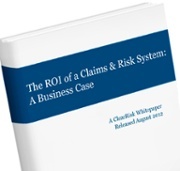Environmental Health and Safety [CHECKLIST]
EHS: Two Sides to One Coin
Having a comprehensive plan in place for ensuring employee safety in a manufacturing facility can be daunting. Your locations may provide high probability for employee injury. When constructing a plan to deal with hazards, it’s troublesome to think that a potential risk has been overlooked. That’s why we've assembled this comprehensive checklist - so EHS Managers like you can use it when reviewing your own documents.
There are two main areas to consider when checking your safety protocols for gaps: the physical space where the work is taking place, and those performing the task.
The Work Space
Before work can take place, the physical location must have the necessary safety features implemented for the type of work being performed. That includes preventing injuries AND providing emergency response resources in case of an accident. When the building has been appropriately outfitted, the equipment that will be used by employees must be evaluated to ensure safe operation. Once these items are accounted for, it’s time to consider the other aspect of safe work: the employees.
The Workers
Safe work begins with safe work design. Employees will not avoid injury if their job demands they perform tasks that will inevitably cause harm. The process of keeping employees safe commences well before they step onto the shop floor: employee training. This crucial step will ensure their time working that job is as safe as possible - for themselves and those they work with. Before sending your newly trained employees onto the floor, you must also ensure they do so with appropriate safety apparel and tools. Knowledge of how to perform a job safely won’t prevent an occurrence if the employee doesn’t have the personal protection equipment necessary.
Download the complete checklist to see what items should be considered when evaluating your own workplace, and to get an outside perspective.
This whitepaper will help you:
- Uncover areas within your organization that have high potential for incidents
- Build a safety checklist and help uncover sources of future losses
- Prepare your organization should an incident occur
- Collect and implement mitigation techniques to help lower the frequency and severity of incidents
- Illustrate the value of tracking incidents and claims, and implementing corrective actions



